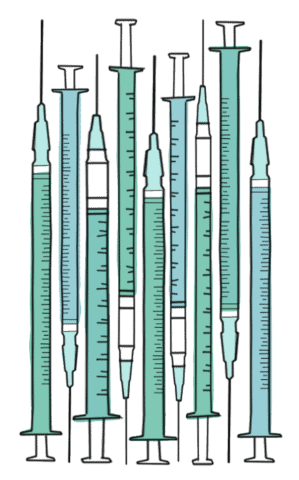While data shows that Saskatoon residents have divided opinions on building a safe injection site in the city, we should be looking at the fact that safe injection sites are proven to work for those most affected by intravenous drug use — the users themselves.
According to a January 2017 poll conducted by Mainstreet and Postmedia services, the majority of people in Saskatoon are opposed to building a safe injection site in the city. Of those that were surveyed, 41 per cent were against a safe injection site, while 38 per cent were in favour.
The poll, conducted on Jan. 3-4, used a random sample of 600 Saskatoon residents, and has a margin of error of plus or minus four per cent, 19 times out of 20.
For those that aren’t familiar with the term, a safe injection site — or a supervised injection site — is a legal, medically supervised facility that aims to reduce the harms of intravenous drug use.
Typically run by nurses, social workers and other public health providers, safe injection sites provide a variety of services to drug users, ranging from sterilized needles to counselling support.
Canada is currently home to two safe injection sites, both located in Vancouver’s downtown eastside — an area famous for its epidemic level of intravenous drug usage. While Saskatoon definitely isn’t Vancouver, that doesn’t mean we don’t have our own issues related to intravenous drug usage.
Saskatchewan continues to lead the country in new reported cases of HIV, with an infection rate two times higher than the national average. Our HIV infection rates are comparable to areas of sub-Saharan Africa. Hepatitis C infection is also a major issue in Saskatchewan.
The leading cause of new cases of HIV and hepatitis C in Saskatchewan? Intravenous drug usage.
Indigenous populations are particularly at risk when it comes to both IV drug usage and HIV infection rates. With one of the highest Indigenous populations in Canada, Saskatchewan needs to consider this when approaching drug addiction treatment and prevention.
The Saskatoon Tribal Council currently operates a needle exchange on 20th Street in downtown Saskatoon that offers many of the same services that a safe injection site would offer: counselling, clean needles and medical assistance. Resources are limited, however, and the STC can only do so much for such a large issue. If more can be done, it absolutely should be.
Safe injection site aren’t things that can or should be built impulsively. They require substantial public funding, proper staffing and expertise. They’re certainly an investment and one that should be considered carefully. There are reasons to be methodical and cautious.
The thing is, if we’re putting at-risk populations first, safe injection sites work. According to Maclean’s, as of 2015 — 12 years after the establishment of Vancouver’s Insite — the area surrounding the facilities had seen a 35 per cent decrease in overdose deaths and the facility itself has never seen a death on site.
Additionally, intravenous drug users who injected at Insite on a regular basis were 30 per cent more likely to seek addictions counselling.
Safe injection sites work. They help to improve the lives of our most vulnerable populations — the ones that have the most to lose and almost certainly the ones that weren’t surveyed on their opinions about safe injection sites.
The numbers are too close for popularity to be a barrier to building a safe injection site. In the end, it doesn’t matter if the majority of people in Saskatoon support a safe injection site or not — what matters is that safe injection sites improve the health and safety of those that use them.
—
Emily Klatt / Sports & Health Editor
Graphic: Kelsey Philipchuk